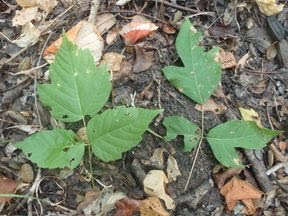The Conspicuous tufts of black hair adorn the first, second, and fourth legs on each side of the body. The tufts are positioned at the distal ends of the femur and tibia of each of these legs. While all spiders have at least two claws on the tips of their tarsi (the last segments on the legs) most orb-weavers--including this species--have three claws, consisting of the paired claws and an unpaired, median claw.
Another clueless, airhead model
Wednesday, October 19, 2011
Creepy Crawly
The Conspicuous tufts of black hair adorn the first, second, and fourth legs on each side of the body. The tufts are positioned at the distal ends of the femur and tibia of each of these legs. While all spiders have at least two claws on the tips of their tarsi (the last segments on the legs) most orb-weavers--including this species--have three claws, consisting of the paired claws and an unpaired, median claw.
Sunday, September 25, 2011
Doobie Jr.
Sunday, September 18, 2011
The Bastrop Complex Fire
We got the call but like many of the hundreds of firefighters mobilized were too late to help other than mop up small fires or chainsaw trees that were a falling hazard. Residents continuously thanked us for saving their homes but we had little to do with it. Still, it was a comfort for them knowing we were there. Three days later the returning residents sifted through ashes for anything to connect to their past.

Saturday, September 03, 2011
This months' project


Background: the "Austin's Woods Conservation Plan" led by the U.S. Fish and Wildlife Service is a mandate to preserve the bottomland hardwood forests south of Houston known as the Columbia Bottomlands which spans the Colorado, San Bernard, and Brazos River floodplains. It is a critical stopover and staging habitat for Nearctic-Neotropical migratory landbirds.
Despite temperatures at or above 100 degrees the field work is better than rotting away in an air conditioned office. I was asked to continue a project by the United States Geological Service which entailed correlating habitat change with an increase or decrease of migrating neotropical birds. Originally accomplished by crews I was left on my own to conduct this monitoring of 41 sites in the bottomland hardwood forests of my Complex. Each site has 30 variables to measure to include tree diameter, woody species height, snag diameter, canopy gap, plant species inventory, presence of an oxbow or bayou, canopy cover, size of woody debris, herbaceous cover and wet or dry litter. All within 3 meters along a 50m measuring tape. Laying out the tape is no walk in the park with more often than not a lot of bushwhacking, crawling, neck raked or head gouged by braches and briar. I learned my lesson after the first day to spray my feet and calves with bug repellent less I continue to scratch from chigger infestation. A yellow jacket stung the back of my arm but rarely swell up from the sting of this species of wasp.
American Elm (Ulmus americana)
50 ft+ tall

Buttresses help stabilize swallow-rooting trees

Box elder maple (Acer negundo), left, is similar in appearance to poison ivy (Toxicodendra radicans).

Virginia creeper (Parthenocissus quinquefolia) is in the grape family but the fruit is inedible for humans.
Grape vines (Vitis spp.) can live beyond 100 years.
Old growth grape vine with pencil for scale.

Green Brier (Smilax rotundifolia)
 Carolina Moonseed (Cocculus carolinus) is a common understory vine. In this picture the vine is entwining so hard that the tree is starting to grow around it. Moonseed berries are red and eaten by birds but are toxic to humans.
Carolina Moonseed (Cocculus carolinus) is a common understory vine. In this picture the vine is entwining so hard that the tree is starting to grow around it. Moonseed berries are red and eaten by birds but are toxic to humans.

Turks' Cap Trumpet Creeper (Campsis radicans) is (Malvaviscus arboreus) maximizes blooming during the southern migration of hummingbirds

Trumpet Creeper (Campsis radicans) is also a favorite plant of hummingbirds
Sabal Palm (Sabal minor) is the most common plant encountered thus far.







